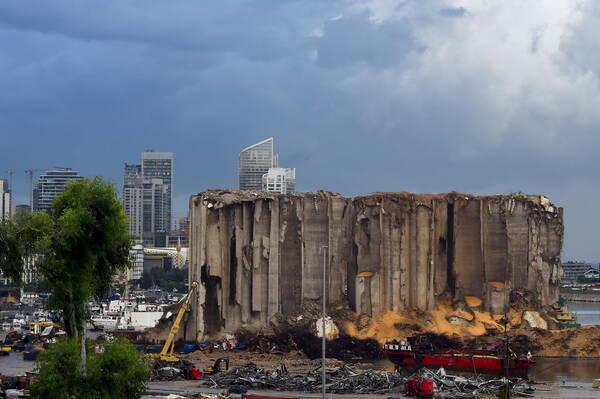Beirut port silos hit by 2020 explosions catch fire
Families of victims fear destruction of a symbol of the disaster
A column of smoke was reported to be rising from inside the silos, where the remains of grain - now spoilt and fermenting - have been left for two years.
The cause of the flames is unclear.
Families of the victims have told media outlets that they are afraid that it may be a case of arson intending to destroy what remains of the silos, which over time have become a true symbol of the August 4, 2020 disaster in which over 250 people died, over 6,000 were injured, and 330,000 were forced to leave their homes.
On August 4, 2020, some 2,750 tons of ammonium nitrate exploded in Beirut's port after being left in unsafe conditions by Lebanese authorities for over six years in one of the port hangars.
The tall grain silos, visible from every side of the Beirut seafront, protected part of the city from the devastating effects of the explosion, which experts rank among the 10 more powerful non-nuclear explosions in history.
After the August 4 disaster, which occurred amid the worst economic and political crisis in Lebanese history, the entire political class was blamed by the victims' families and by broad swaths of public opinion. Massive street protests had already begun periodically starting in 2019 against corruption and bad government.
Several analysts and observers say that the Lebanese political class has thus far managed to impede the Lebanese judiciary under judge Tareq Bitar from identifying those responsible for the August 4, 2020 explosion.
For this reason, sectors of civil society and the victims' families demand that what remains of the silos should remain standing and be transformed into a monument commemorating the disaster and the responsibility of those behind it.

No comments:
Post a Comment